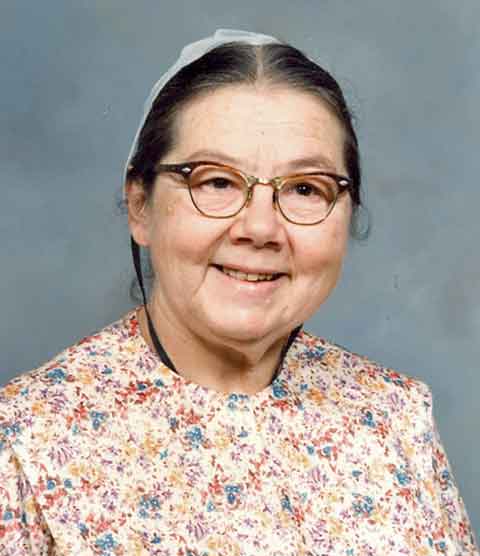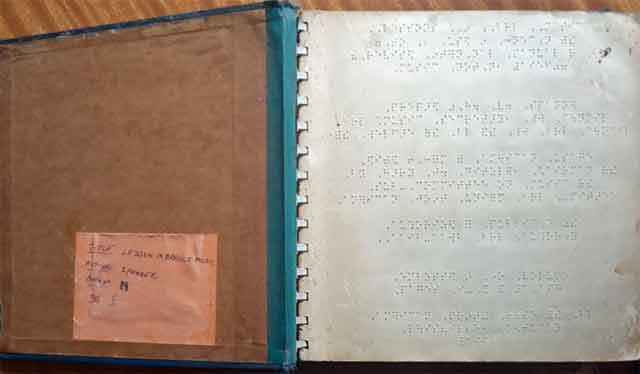Meriha Iwran [መርሐ ዕውራን, märha ǝwwǝran, guide for the blind] was a school for the blind, opened by Mennonite missionaries in the Urael area of Addis Ababa in 1952 and operated there until the school moved to Sebeta, a town twenty-five kilometres southwest of Addis Ababa, in 1963. One of the subjects taught by the missionaries was music. In this regard, Miss Alice Snyder played the leading role in teaching Braille music notation to the blind students. She enabled several boys to become good organ and piano players.
Meriha Iwran choir was started sometime in 1955. It was a boys’ choir. However, the boys who sang the soprano and alto parts were so young that their voices resembled girls’. Hence, it appeared to be a mixed choir. As students left Meriha Iwran for further studies, new members joined the choir, and those who sang the soprano and alto parts shifted to the tenor or bass parts as their voices grew deeper.
The choir of the Addis Ababa School for the Blind became known outside the school through its participation in an annual religious conference in Nazareth in 1955 and 1956. This led to further invitations of the Choir (sometimes also quartets and octets of its members). Probably in 1958, the Meriha Iwran choir joined the choir of the Addis Ababa Mekane Yesus congegation in a Easter celebration. One of the songs was sung in eight parts. In March 1960, Evangelist Billy Graham held a rally in Addis Ababa. The Addis Ababa School for the Blind Choir and blind girls from the Kechenie Empress Mennen School sang for the audience. Mr. Graham was pleased with the performance of the Choir and the singing response of the audience in general.
In the early 1960s, the Mennonite Mission acquired a plot of land in the Bole district of Addis Ababa and built a church there. It became the first Meserete Kristos congregation. Some former members of the School for the Blind went to sing in the Bole church. With the spread of the Meserete Kristos Church, congregations first used to sing in unison, but later on, local choirs began to be formed. There were also occasions where members of the School Choir joined Mennonite missionary singers at wedding ceremonies.
Miss Alice Snyder was responsible for organizing the choir and managed it until 1963. When she began teaching music at the school, there were several English hymnals available in both print and Braille. Some time later, the choir members formed a committee to translate many of the songs they liked to sing into Amharic. It is believed that the committee included Alemu Chekole, Kidanemariam Mekonen, Nigussie Gebre, Tibebu Feleke, and Taye Negatu.
After about a year, the translation was completed. The committee presented its translation work first to the other choir members and, after their approval, to the school administration. After careful review and evaluation, the translated songs were approved for publication.
The hymnal was published under the title Mahletä Ǝgziʼabǝher [ማሕሌተ እግዚአብሔር, Praises to God]. This hymnbook became popular and was used in different churches. Several songs are still heard being sung at special occasions, such as memorial or funeral services. For instance, the Amharic version of the song “This world is not my home.”
After 1963, whenever former choir members had the chance of getting together, they sang hymns in quartets, octets, or in whatever number they were present. In 1973, the first directors of Meriha Iwran, Martha Keener and her husband, came to Ethiopia to visit different Mennonite Mission institutions and their former students. We believe that former choir members sang in honor of their former directors, whom they considered as their mother and father. But this was an informal performance.
Following the transfer of the school to Sebeta, the Mennonite missionaries were no longer in charge of the School. It was now headed by Father Rankin from Dublin, Ireland. The Addis Ababa choir was discontinued. However, the Sebeta School for the Blind had its own choir. The regular music teacher was Ato Abera Gulelat, a gifted former student of the Addis Ababa School for the Blind. In addition to what he learned from the School for the Blind, he got training in a special school in Rome for nearly one year and later on in the Yared School of Music in Addis Ababa. Sometimes the members of the Sebeta Choir also obtained training from well-known musicians such as Professor Ashenafi Kebede.
The Sebeta choir members were not limited to spiritual songs and hymns but were also engaged in instrumental and secular music. Some of them gained fame in this regard, e.g., Haile Mariam Woldegiorgis, who played in the then national police orchestra. In the late 1960s and 1970s former Sebeta School for the Blind students organized an ensemble known as the Rainbow Band (vocalist: Teshome Asseged).
Hymn book
Mahletä Ǝgziʼabǝher [ማሕሌተ እግዚአብሔር, Praises to God]. Edited by Meserete Kristos Church. Addis Ababa: Central Printing Press, 1962/63 (1956 AM). [Translated by members of the Meriha Iwran School (for the Blind) Choir]
» View book
Connect
» Visit history website of Zena Wengel Ministry
» Visit Zena Wengel Ministry’s YouTube channel
(with inofficial recordings of the School Choir from the late 1950s)
Audio
Alice Snyder made tape recordings of the choir songs from time to time. These recordings were reel tapes and taken to the US. Later, they were transformed into cassette tapes.
Its seems that there is also a recording in the Radio Voice of the Gospel Archives:
- Programme “Lift up your voice” (11.15)
9 tapes; pay particular attention to:
R/LUYY-7: [AAU Christian Students’ or Eth. Univ. Stud. Christian (?)] Fellowship Choir / Blind students from Addis Ababa / Director Jack Smith (broadcasted on 1973.09.07)
Video
Emperor Haile Selassie I visiting Sebeta School for the Blind:
Picture

(adapted from picture on
ZenaWengel.org)

Louisville, KY: American Print House for the Blind, 1961.
(courtesy Berhanu Belay)
Further reading
Hege, Nathan B. Beyond Our Prayers: An Amazing Half Century of Church Growth in Ethiopia, 1948-1998. Scottsdale / Waterloo: Herald Press, 1998. [See p. 72-74; Archive.org]
Alemu Checole (assisted by Samuel Asefa), “Mennonite Churches in East Africa,” in Anabaptist Songs in African Hearts: A Global Mennonite History, ed. Alemu Checole et al., p. 191-253. Intercourse, PA: Good Books / Kitchener, ON: Pandora Press, 2006. [See p. 208]